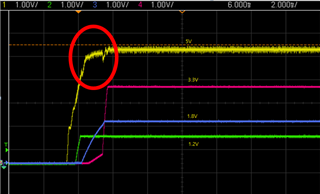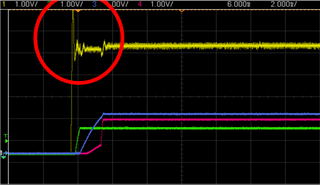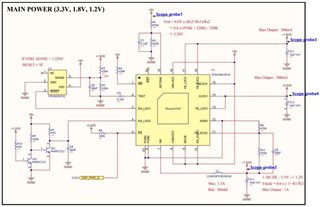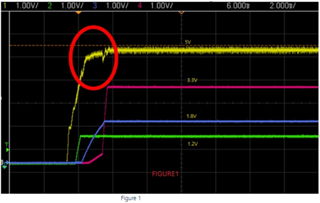Hello E2E Experts,
Good day.
TPS650061RUK Technical support request
I am inquiring about the TPS650061RUK output voltage we purchased.
There is an issue with output voltage among optical communication production boards as below, so please check it.
Photo 1 TPS650061RUK All Output Voltage Normal Operation (Digital scope measurement)
Photo 2 TPS650061RUK 3.3V output voltage output abnormally.
Photo 1 shows that the TPS650061RUK output normally and Photo 2 shows that it is output abnormally.
From the figure above, you can see that it is caused by the influence of 5V (yellow line in the figure) entering the TPS650061RUK.
I want to know exactly what the problem is and the cause of the problem with the output of the TPS650061RUK. (For example, 5V ramp time, ripple.
Correct:

Wrong:

Regards,
CSC




